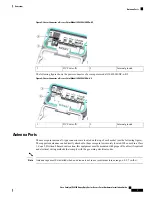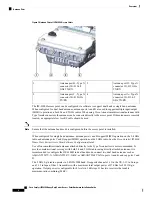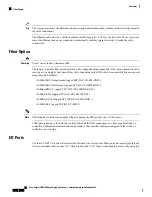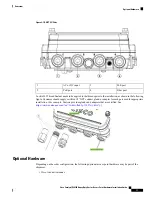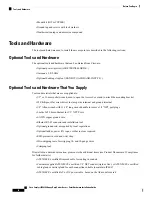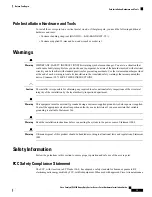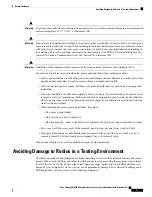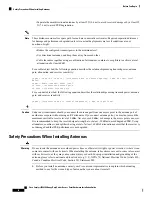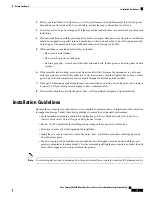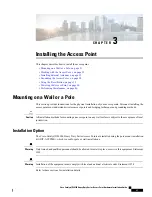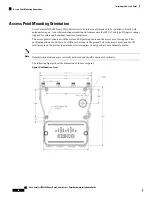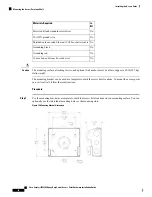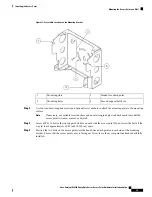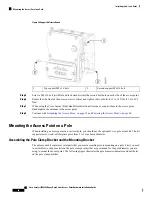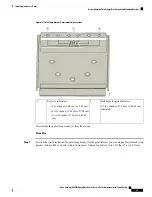
• Separate the omnidirectional antennas by at least 2 ft (0.6 m) to avoid receiver damage or by at least 25
ft (7.6 m) to avoid PER degradation.
These distances assume free space path loss and are conservative estimates. Required separation distances
for damage and performance degradation levels in actual deployments are less if conditions are not
non-line-of-sight.
Note
• Reduce the configured transmit power to the minimum level.
• Use directional antennas, and keep them away from each other.
• Cable the radios together using a combination of attenuators, combiners, or splitters to achieve a total
attenuation of at least 60 dB.
For a radiated test bed, the following equation describes the relationships among transmit power, antenna
gain, attenuation, and receiver sensitivity:
txpwr + tx gain + rx gain - [attenuation due to antenna spacing] < max rx input level
Where:
txpwr = Radio transmit power level
tx gain = transmitter antenna gain
rx gain = receiver antenna gain
For a conducted test bed, the following equation describes the relationships among transmit power, antenna
gain, and receiver sensitivity:
txpwr - [attenuation due to coaxial components] < max rx input level
Under no circumstances should you connect the antenna port from one access point to the antenna port of
another access point without using an RF attenuator. If you connect antenna ports, you must not exceed the
maximum survivable receive level of 0 dBm. Never exceed 0 dBm, or damage to the access point can occur.
It is recommended to keep the received signal strength at or below -30 dBm to avoid degraded PER. Using
attenuators, combiners, and splitters having a total of at least 60 dB of attenuation ensures that the receiver is
not damaged and that PER performance is not degraded.
Caution
Safety Precautions When Installing Antennas
Do not locate the antenna near overhead power lines or other electric light or power circuits, or where it can
come into contact with such circuits. When installing the antenna, take extreme care not to come into contact
with such circuits, as they may cause serious injury or death. For proper installation and grounding of the
antenna, please refer to national and local codes (e.g. U.S.: NFPA 70, National Electrical Code, Article 810,
Canada: Canadian Electrical Code, Section 54). Statement 280
Warning
1.
Before you install an antenna, contact your Cisco account representative to explain which mounting
method to use for the size and type of antenna that you are about to install.
Cisco Catalyst IW6300 Heavy Duty Series Access Point Hardware Installation Guide
18
Before You Begin
Safety Precautions When Installing Antennas




